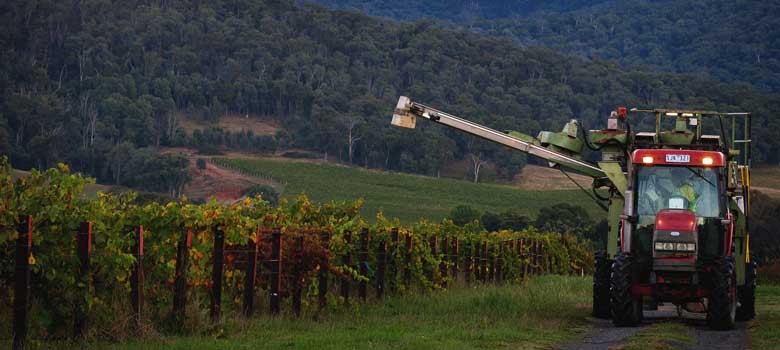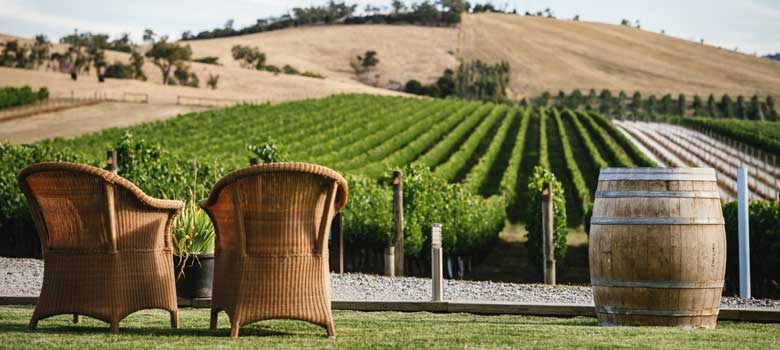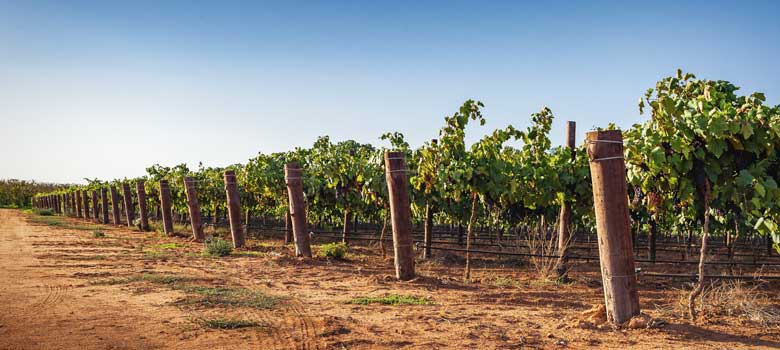
Wine
Embracing Alternative Wines
Change is afoot in the Australian wine scene with consumers embracing the alternative perspective in the quest to expand their palates.
According to Wine Australia, ours is “one of the most diverse wine scenes in the world,” with “over 100 different grape varieties grown across 65 wine regions.”
Shop Alternative Wines
One of the biggest changes the Australian wine industry has recently been experiencing is the growing eagerness among wine-lovers to push their taste boundaries. As Brett Butcher, director of Soumah wines in the Yarra Valley says, “Wine drinkers are searching out the new and unknown.”
And there’s plenty to uncover. According to Wine Australia, ours is “one of the most diverse wine scenes in the world,” with “over 100 different grape varieties grown across 65 wine regions.” Of course, Australia’s vineyard plantings are still dominated by Chardonnay, Shiraz and Cabernet Sauvignon, but every year, more alternative varieties are creeping in.
When we think of alternative grape varieties, we often assume they’re newly introduced to Australia. But that’s not necessarily the case. Kim Chalmers, whose family has been adding to the diversity of Australian wine for over 30 years, explains.
“Often we talk about these varieties as new or emerging because a lot of them have just landed or they’ve only been here 10 or 20 years. But if you look at, say, Best’s with the nursery block down in the Grampians, they’ve had Dolcetto there for 150 years.”
To be entered into the Australian Alternative Varieties Wine Show (AAVWS), a grape variety is analysed by the committee. They discuss how many hectares of it are planted, how mature the wine style is, how commonly it appears in retail outlets and on wine lists, and how aware consumers are of it. So there’s no set criteria, but the committee carefully tracks a grape’s progress and, it states on the AAVWS website, “If and when they become mainstream, they are graduated and are no longer included in the show.”
The Italian Connection
Two of their recent graduates are Pinot Gris/Grigio and Prosecco, which belong to the Italian family of varieties that dominates Australia’s alternative wine scene. Think Sangiovese, Nero d’Avola, Barbera and Nebbiolo in the reds, and Vermentino and Fiano in the whites.
One of the obvious reasons Italian grapes do so well here is that both countries share a warm climate. And with Australia’s climate becoming increasingly warmer, we need grapes that thrive in those conditions (rather than “all moving to Tasmania and planting Riesling”, as Kim says).
However, while climatic conditions between Italy and Australia are similar, they are by no means the same. As winemaker Sam Scott of La Prova in the Adelaide Hills explains, “This is a big generalisation, but the countries and regions have probably more dissimilarities than similarities. Australia with higher UV and Italy with generally more humidity, which make for different takes on the same varieties.”
Peter Lloyd of Coriole in McLaren Vale, who pioneered Sangiovese in Australia, describes the differences between his winery’s styles and those coming out of Italy.
“In the past, our Sangiovese was always a little riper and higher alcohol than most Chianti. This is certainly not the case now. Chianti is often now higher in alcohol, with more oak than our expression. Our Negroamaro we make in a very light, fragrant style that is polar opposite to a lot of the ripe ‘international’ styles of wine coming out of Puglia.”
Winemaker Ashley Ratcliff of Ricca Terra in South Australia’s Riverland region agrees. “I think the Australian versions (of Italian varieties) are very fresh and bright and lively and they do look very different to some of the European wines.”
For winemaker Joel Pizzini, whose family champions Italian varieties in Victoria’s King Valley, the uniquely Australian expressions of these wine styles “is influenced by our region, soil and winemaking ethos,” he says. In fact, he adds, they strive hard to ensure their alternative varieties stand apart from the mainstream styles in the way they are made, otherwise “the wine may look like Sangiovese but taste like Shiraz. Ultimately, we as winemakers can’t just stick to the same recipes that worked for the mainstream varieties, we need to mix it up.”
Changing Tastes
The beauty of the fact that Australian alternative styles are lighter and brighter than their European peers, is that this ties in perfectly with the changing tastes of Australian wine-lovers.
As Ashley describes, “Even though we match food with wine, we don’t actually match wine with climate. You know, when you get a warm day, people want to drink lighter style reds or crisp whites, so I think the change in the consumer preference for these lighter style, easy-drinking wines works very well with alternative varieties.”
And it’s not just the Italian grapes making a splash with Australian consumers. One of our most popular alternatives is Tempranillo from Spain, and varieties like Grüner Veltliner from Austria and Touriga Nacional from Portugal are also gaining a following. Then there’s Savagnin, grown most commonly in the French region of Jura.
Savagnin is an interesting success story on Australia’s alternative wine scene as vignerons originally planted it thinking it was the Spanish variety Albarino.

Soumah were among the pioneers, and as Brett explains, while they were shocked to discover its real identity, they’ve since found it to be an historic variety with huge appeal. “It is one of the original grapes, the mother of many, and it’s this intrigue that captured us. We would not have Cab Sav today without it! It can be clean and crisp, with great dimension as a tank fermented wine, but takes on brooding and rustic notes if barrel fermented on full solids.”
Another reason alternative varieties are proving so exciting for wine-lovers is that they are being crafted with a passion for innovation. And this drive among Australian wineries like those included here is increasing the understanding of the region-variety connection among these alternative styles, further enhancing the quality.
For example, Peter says that while they originally had Nebbiolo, Barbera and Pinot Grigio planted on their McLaren Vale site, they’ve discovered that heat-seeking varieties like Fiano, Sangiovese and Nero d’Avola do best in their warmer conditions. While Kim cites Beechworth as having what it takes for both Nebbiolo and Sangiovese to thrive, whereas Fiano does well in a variety of regions.
Future Aussie Icons
In fact, Kim hopes we can one day stop being so caught up in where these alternative grapes originally came from and associate them more with the Australian regions that do them well. “(Even though it’s French), we think of Shiraz as an Australian variety now,” she says, “however, when we talk about Fiano, we still talk about it as an Italian variety.
So we need to get over that hurdle and think about what are the Australian wines, and one step further than that, what are the Adelaide Hills wines? What are the Hunter Valley wines? What are the Riverland wines?”

While Kim sees these varieties as “creating the regional Australian wines of the future”, they’re not going to be hitting the mainstream any time soon. The reality is that the amount of vineyards planted to conventional varieties is actually increasing.
Yet, as Sam describes, “consumers are seeking out and supporting (alternative) varieties, good work legends!” and for Brett, that’s motivation enough – “We enjoy seeing the sparkle in their eye when they taste something different, something new.”